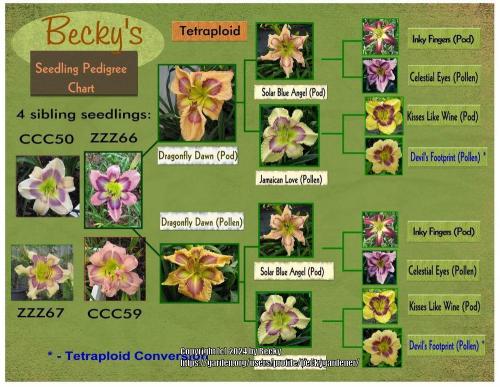beckygardener said: Oh! And I do have some good news for those with root knot nematode issues like me. Apparently chicken manure and wood ash can help reduce the number of nematodes:
https://apsjournals.apsnet.org...
There is also this research,
Alternative Management Strategies and Impact of the Northern Root-Knot Nematode in Daylily Production
Amanda D. Howland, Emilie Cole, Kristin Poley, and Marisol Quintanilla
Abstract
Bare-root production of Hemerocallis spp., daylily, is of major economic importance to Michigan's ornamental industry, but production of clean nursery material is challenging due to plant-parasitic nematodes. The northern root-knot nematode, Meloidogyne hapla, is the most important perennial ornamental pathogen in northern North America; it causes over 20% yield loss in Hemerocallis spp. production and reduces marketability and distribution. A field trial was established in 2018 to 2020 at a Michigan commercial nursery to determine effective and long-term management strategies to reduce nematode population levels. Eleven treatments were tested: a control, four bio-nematicides, two nematicides, a nematicide root dip, and three compost blends. Soil samples were taken three times per year, along with annual root samples and plant height measurements. Results indicated that TerraClean 5.0 (hydrogen peroxide) and Majestene 304 (Chromobacterium subtsugae) nematicides best controlled M. hapla populations by 49 and 37%, respectively, compared with the control, whereas Indemnify (fluopyram) significantly increased plant biomass and yields by 31%. A greenhouse study was conducted to determine the impact of M. hapla on Hemerocallis spp. production by inoculating daylily with varying nematode inoculation densities. Even at low population levels, plant biomass reductions were observed, and M. hapla was readily able to reproduce on Hemerocallis spp. These experiments highlight the importance of managing M. hapla and provide effective, alternative management methods that can reduce the application of fumigants and prevent yield losses to increase profitability for ornamentals.
Only the abstract is freely available to read but I have requested a copy of the published article from the author(s).
See also
https://apsnet.confex.com/apsn...
https://www.floraldaily.com/ar...
https://www.canr.msu.edu/news/...
